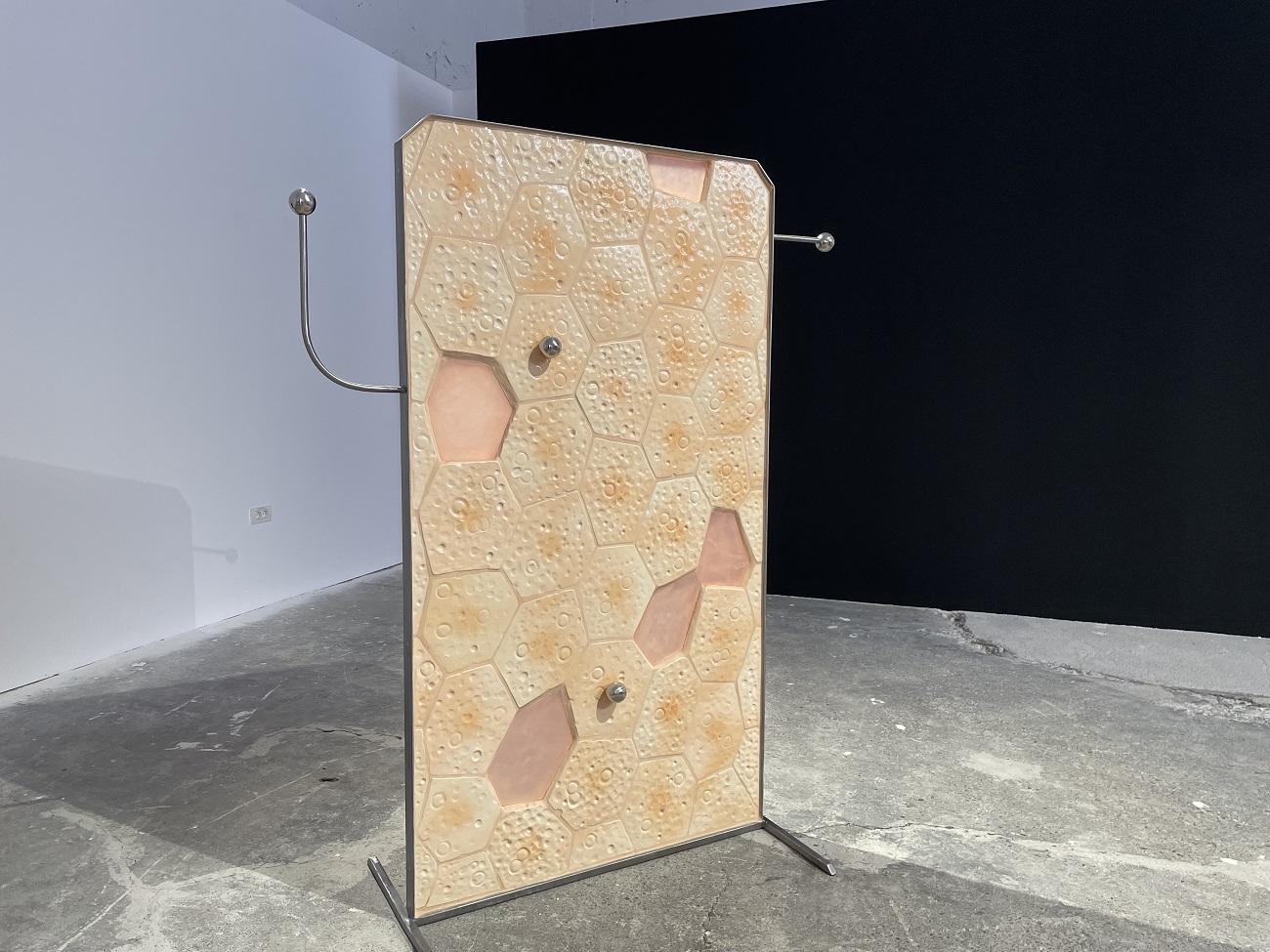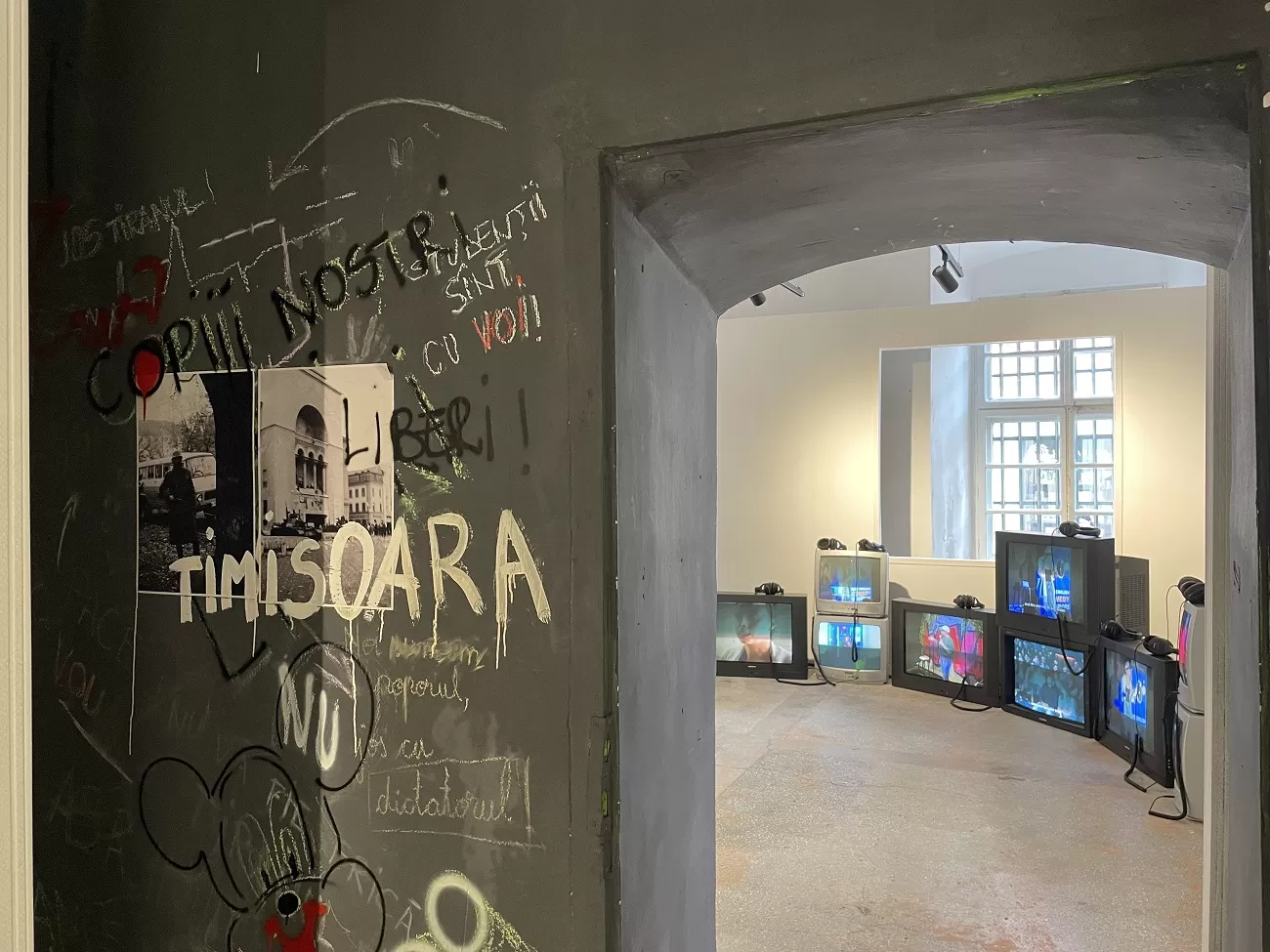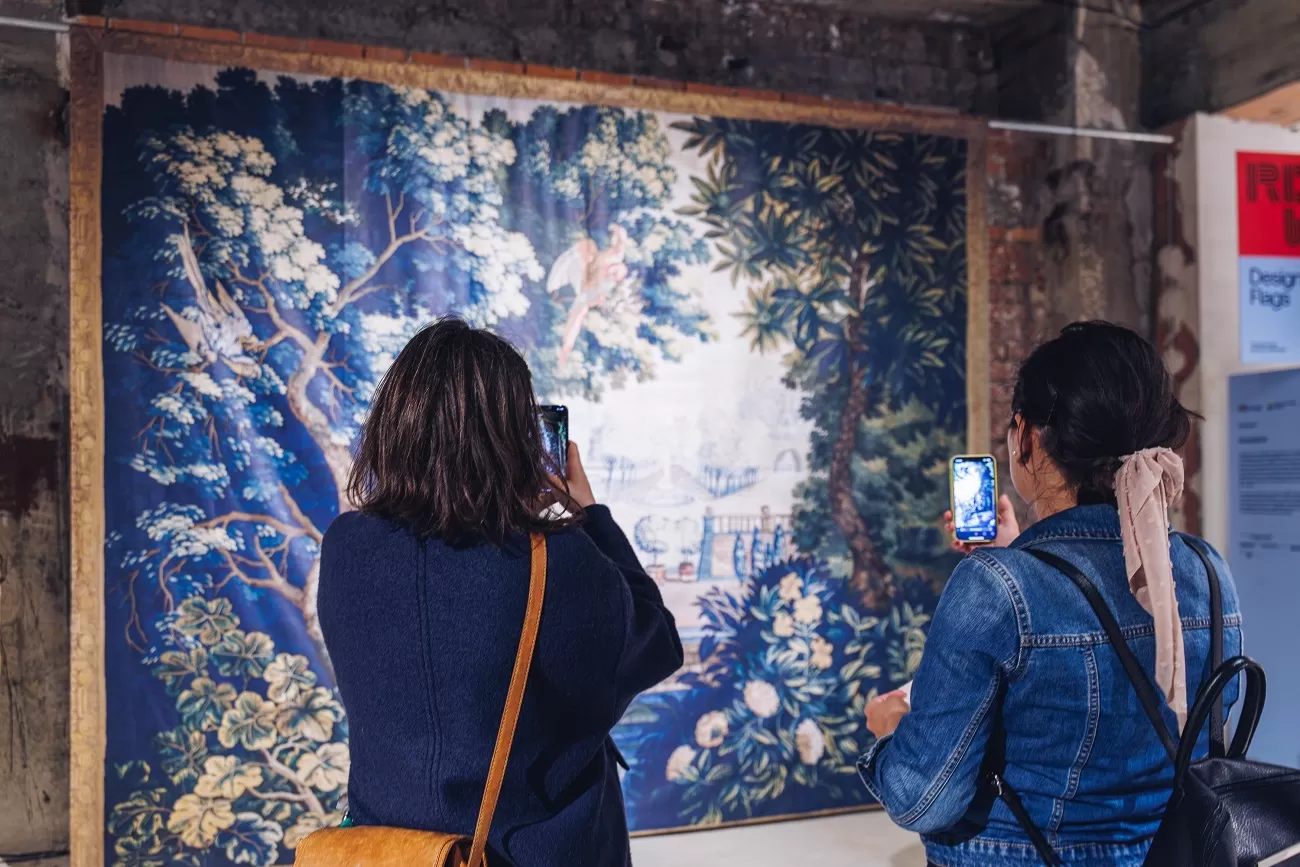
INTERVIEW – Vlad Nancă, artist at the Venice Architecture Biennale 2025: Every artistic act is political
Vlad Nancă, the artist who is part of the team representing Romania at the Venice Architecture Biennale 2025, talks in a curatorial interview about “Human Scale” and how it was implemented, about his interdisciplinary practice, the socio-political side of his own creation, and how this approach completely changed his perception of architecture in Romania.
Currently, the project team is involved in producing the catalog, organizing a conference and a drawing workshop to be held in Bucharest on June 26 and 27.
As for Vlad Nancă, he is preparing an exhibition for the Il Ponte Gallery in Florence, with which he has collaborated before, and a large-scale project at Scânteia+, in collaboration with architect Corvin Cristian and curator Michal Novotný.
Romania is participating in the 19th edition of the International Architecture Exhibition – La Biennale di Venezia with the project “Human Scale” by artist Vlad Nancă and the architecture firm Muromuro Studio (Ioana Chifu and Onar Stănescu), curated by Cosmina Goagea.
The exhibition is presented until November 23, 2025, in two complementary spaces: the Romanian Pavilion in Giardini della Biennale and the New Gallery of the Romanian Institute for Culture and Humanistic Research in Venice.
“Human Scale” proposes a reflection on the intersection between visual arts and architecture, through a dialogue between drawings made by Romanian architects in the 20th century and the works of contemporary artist Vlad Nancă. “Human Scale” sheds new light on Romanian architecture of the last century through drawings by architects that reveal not only a vision of space, but also the way in which people and public life were imagined. By examining the human silhouettes in these drawings, we gain new perspectives on how existing buildings could be adapted for the 21st century.
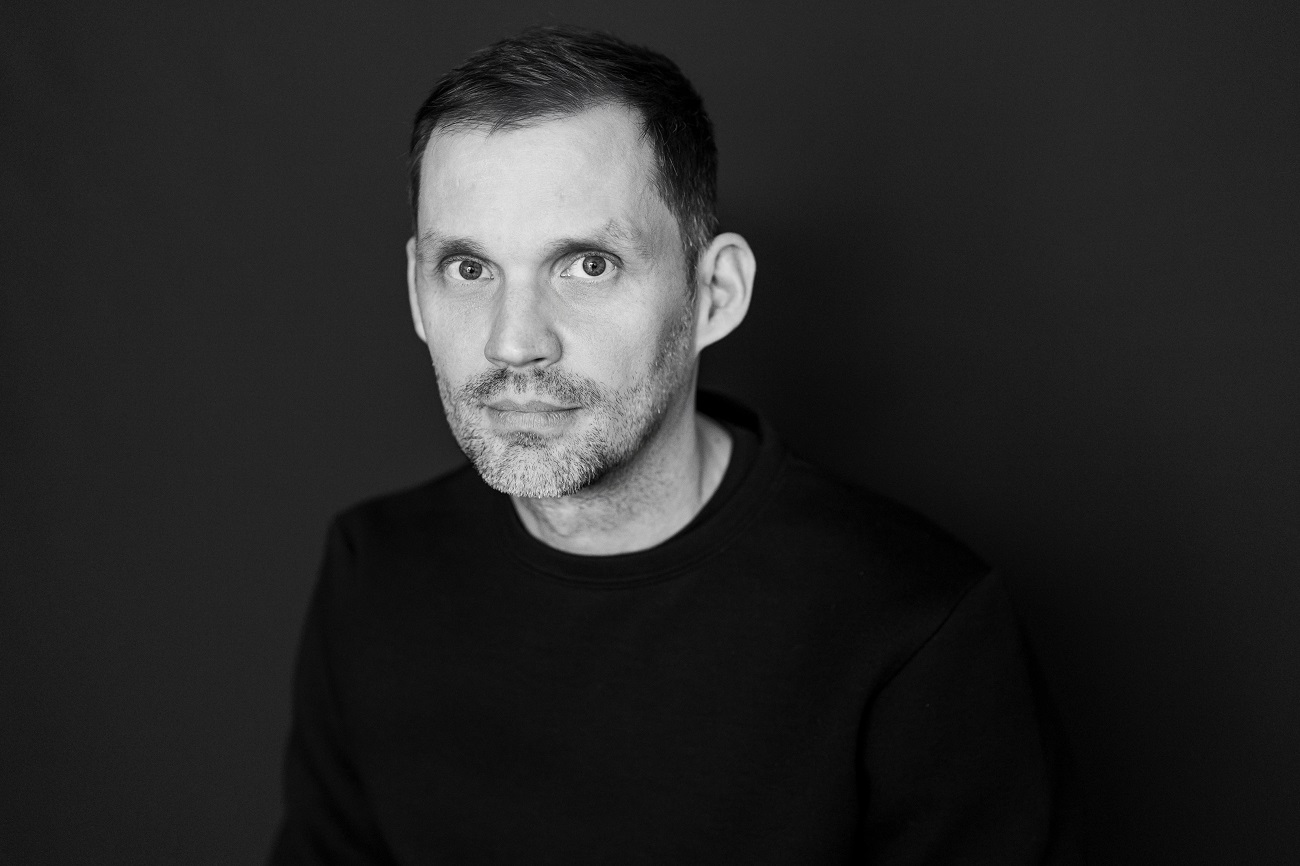
Vlad Nancă; photo: Alex Gâlmeanu
How has the project developed?
Vlad Nancă: The project originated from a series of personal works in which I utilize architectural silhouettes intended to provide scale to the buildings proposed in the architectural drawings. These are subsequently enlarged by me to a 1:1 scale and integrated into my exhibitions. Over time, this type of work has generated increasing interest in architectural drawing, which led me to see participation in the Biennale project competition as an opportunity to access various architectural drawing archives in Romania. Documentation is, in fact, an essential element in our project in Venice.
The project became a collective endeavor with the formation of the competition and implementation team. The way it looks at the Biennale is the direct result of this teamwork: Ioana Chifu and Onar Stănescu (Muromuro studio) – co-authors; Cosmina Goagea – curator; Otilia Mihalcea – art direction; Corina Bucea – project coordination; Ana Ciobanu – producer; Ioana Zamfir, Andreea Ilie, and Alexandra Statache – documentation; Florin Nicolae – implementation. Each person’s contribution was essential to the final form of the project.
Muromuro Studio proposed a solution perfectly suited to the themes addressed and the exhibition needs of the two spaces: the 20th-century drawing archives in Romania—a valuable and extremely rich resource, the study spaces dedicated to the archives, as well as my own works. Cosmina Goagea translated the ideas and thematic directions into a coherent and unified concept, giving the project a clear structure. The documentation part would have been impossible to achieve without the contributions of Ioana Zamfir, from the National Museum of Maps, as well as Andreea Ilie and Alexandra Statache, who made essential contributions to the research and selection.
The entire project could not have taken shape without the concrete involvement of Corina Bucea, who coordinated the project down to the smallest details from the competition phase, Ana Ciobanu, who took care of the logistics and smooth running of the project as producer, and Florin Nicolae (Kaustik), responsible for the technical side and effective implementation – consummate professionals, without whom the project would not have existed.
A major problem for Romanian participants in the Venice Biennale is the short time available to prepare the exhibition. Given the circumstances, how did you relate to the architects and curator involved, and what were the main challenges in carrying out the project?
Vlad Nancă: The short time frame is indeed the main problem when it comes to implementation. It wasn’t easy for us either, but I think we managed to avoid many difficulties because the team was very well prepared both in the competition and implementation phases. We started working on the project even before the competition was announced. This was advice we received from participants in previous editions of the Biennale: to start working as early as possible. It is essential that the team be formed in advance and that work be done simultaneously for both the project competition and implementation.
I would offer the same advice to those who wish to participate in the future: work as if you have already passed the first stage and be prepared for the second. The work for the second stage of the competition takes place during the winter holidays, so it is important to be one step ahead—to act as if you have been selected and need to deliver the final project. Every day counts, every role in the team counts, and everyone must work with confidence and dedication to the success of the project. That’s what we did – and even so, it wasn’t easy. But the satisfaction of a successful project outweighs any inconveniences.
Architectural drawings inspired by modern and contemporary Romanian architects – who are these creators and how did you adapt their work?
Vlad Nancă: My first works with silhouettes were anonymous, but as my interest in architectural drawing grew, I began to work with silhouettes taken from drawings by well-known authors such as Adolfo Natalini, Henrieta Delavrancea-Gibory, and Vlad Gaivoronschi. In each case, the motivations for using these silhouettes are related to the context of the exhibition in which they are presented and the themes I am trying to convey through the other works included.
What we are presenting in Venice, however, is a distinct endeavor: a comprehensive effort to document architectural drawing throughout the 20th century. It is a project independent of my artistic practice, created especially for the Venice Biennale. We have accessed numerous public and private archives and are presenting over 300 drawings—originals in the Romanian Pavilion in the Giardini della Biennale, and reproductions in the New Gallery of the Romanian Institute for Humanistic Research.
Can you give us more details about a piece that required a special effort to create and why?
Vlad Nancă: Among my works presented at the Biennale is “Map of the World,” a large-scale work inspired by one of the first representations of the globe—Martin Hylacomylus’s map from 1509. What interested me was the possibility of reading this map as a grid. The grid is a recurring theme in my works, and the representation is achieved through various objects composed of 15×15 cm industrial ceramic tiles. The same standard was used for the “Map of the World,” which was enlarged by creating custom ceramic tiles in this format. Specifically, there are 648 tiles handmade by Victoria Finală—an extraordinary effort on her part, for which I will remain deeply grateful. The dry parts are made of unglazed ceramic, and the water areas are made of glazed ceramic tiles. It is a large-scale work that dominates any space, while retaining a particular fragility and sensitivity. Just like the planet we live on.
Did you change anything at the last minute before sending the project to the Biennale?
Vlad Nancă: There were many last-minute changes, and decisions regarding creation and content were made until the very last moment. In addition to the short time frame, there was a constant desire to improve things and achieve the best possible form for every detail. This ambition pushed each of us to want to perfect the proposed solutions. We had the chance to work with exceptional workshops—Kodex, for printing and framing, and Kaustik, for the entire production. They showed patience and supported us with professionalism in every idea, no matter how difficult it was to put into practice.
Do you consider your art to be an instrument of social change or rather introspective?
Vlad Nancă: I believe that real social change requires collective action. I don’t think my art alone can bring about such change. I can’t be that arrogant. What I try to do is communicate ideas and themes through my work. In this sense, I believe that any artistic act is political. My older works had a more direct and easily readable political message. My current works are more subtle, but for me they remain just as committed. They may not mobilise people, but they can provoke reflection and discussion. And sometimes, that is the beginning of change.
How do you hope people will relate to your work?
Vlad Nancă: I hope that the public will be equally attracted to both the aesthetic qualities and the implicit messages of my works. I want them to be both entertaining and intellectually stimulating. I am delighted when people tell me that they see connections between my early and current works, because although I realise that my practice has changed over the years, for me everything is connected.
As for the works presented at the Biennale, I hope it will be an opportunity for visitors to discover both my extensive practice, in all its forms, and that of all my colleagues involved in the project, and to generate new opportunities for each of us to assert ourselves.
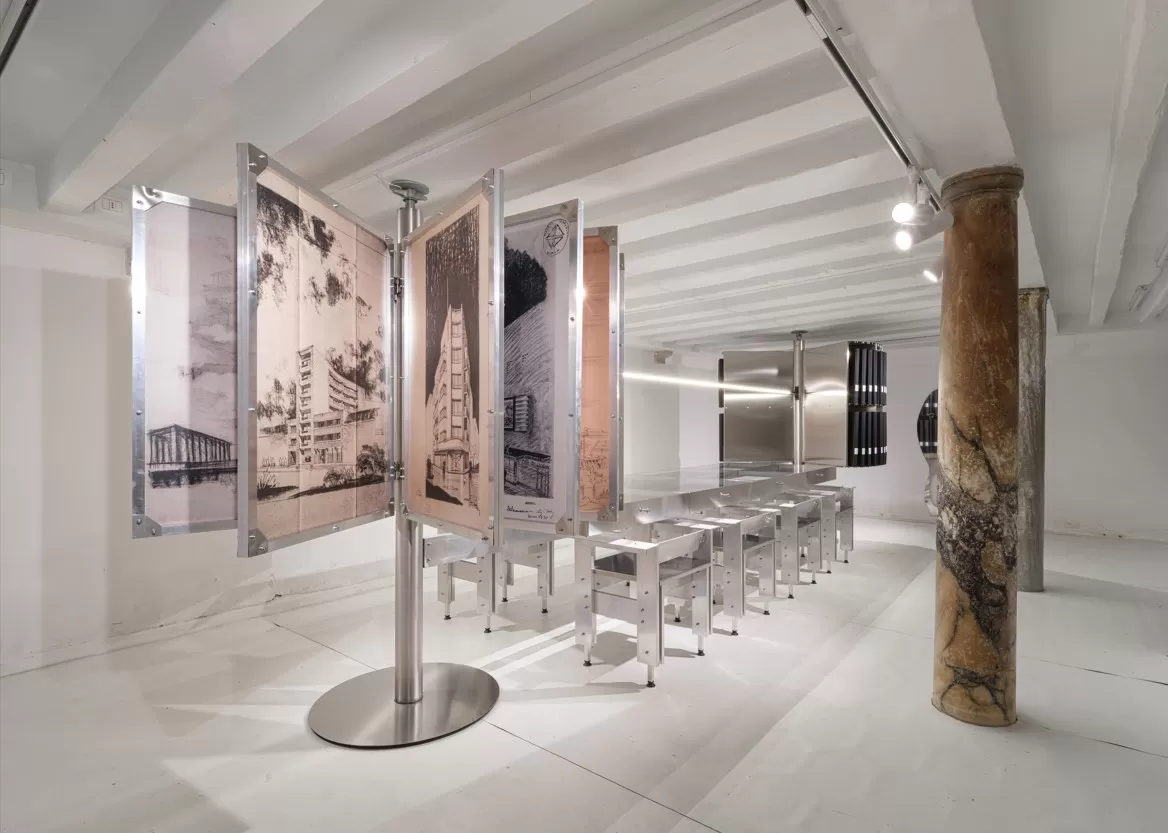
„Human Scale”, at Noua Galerie of IRCCU
What reactions have you received from the public so far regarding the project?
Vlad Nancă: I would say that the reactions have been generally positive, enthusiastic, and, I would add, even proud. Naturally, we receive positive reactions. I’m sure there are also people who are rather skeptical, and I think that’s perfectly normal. There are people for whom it is probably more difficult to understand the project or to perceive its essence beyond the photos circulating on the internet, which, again, is understandable.
The exhibition operates on several levels: there is the direct experience of the visit, a sensory one, of participation and interaction with the built space and with my works; another of discovery and study of the drawings present in both spaces; and another of understanding the associations of ideas and connections between my works, the maps and drawings in the exhibition and, finally, the whole ensemble. All of these are more difficult to perceive from a distance, and documentary photographs cannot fully convey these layers of interpretation. It would be ideal for the exhibition to be discovered by as wide an audience as possible, and I hope that the positive reactions will continue. We are delighted every time we hear that people feel well represented in Venice through our project. We hope that the plan to bring the exhibition to the country next year will materialize and, in this way, facilitate access to the project for an even wider audience.
As an artist participating in the Architecture Biennale, how do you view this experience?
Vlad Nancă: For me, participating in the Venice Biennale was a long-standing desire. I felt that this project, which is based on architectural drawing, was more suited to the Architecture Biennale than the Art Biennale. Once we arrived in Venice, I was delighted to discover that many other pavilions were presenting collaborative projects between artists and architects.
As far as our project was concerned, I was actually in the minority. In our team, on the creative side, the ratio of architects to non-architects was four to one. For me, this meant a different and very valuable work process, from which I learned a great deal. I learned just as much from the documentation side of architectural drawing. To select the 300 drawings included in the project, we had to go through thousands, maybe even tens of thousands of works. This process completely changed my perception of architecture in Romania.
What impact do you think this participation will have on your career?
Vlad Nancă: It’s hard for me to say right now. I still don’t fully understand what’s happening, let alone what impact it will have in the long run. The extremely short implementation time left us almost no room to think about anything else. What I can say for sure is that I am happy that the project turned out the way we wanted it to, that the choice of team and the shared vision with the architects proved to be inspired, and that this collaboration really worked. I hope to be able to continue with new projects. That’s all I can say right now.
Following the opening, will there be other events—guided tours, conferences—in which the team will participate?
Vlad Nancă: After the opening, the mediation part of the exhibition remains the responsibility of the cultural mediators, that is, the exhibition curators. A mix of Romanian and foreign students, studying architecture or arts, some very young, others with previous mediation experience in Venice in previous editions, was selected for this team.
We, the project team, are still involved in putting together the catalog, organizing a conference and a drawing workshop that will take place in Bucharest on June 26 and 27. We also want to continue documenting architectural drawings. A conference is scheduled for the fall in Venice, and for next year we plan to bring the project to Bucharest and produce a new publication, in which the selection from the archives will be analyzed by researchers from various fields.
What’s next for you after the Biennale?
Vlad Nancă: Right now, I’m working with the team on getting the catalog and conference ready. My personal projects are in the works for the fall: an exhibition at the Il Ponte Gallery in Florence, which I’ve worked with before, and a big project at Scânteia+, done with architect Corvin Cristian and curator Michal Novotný.







